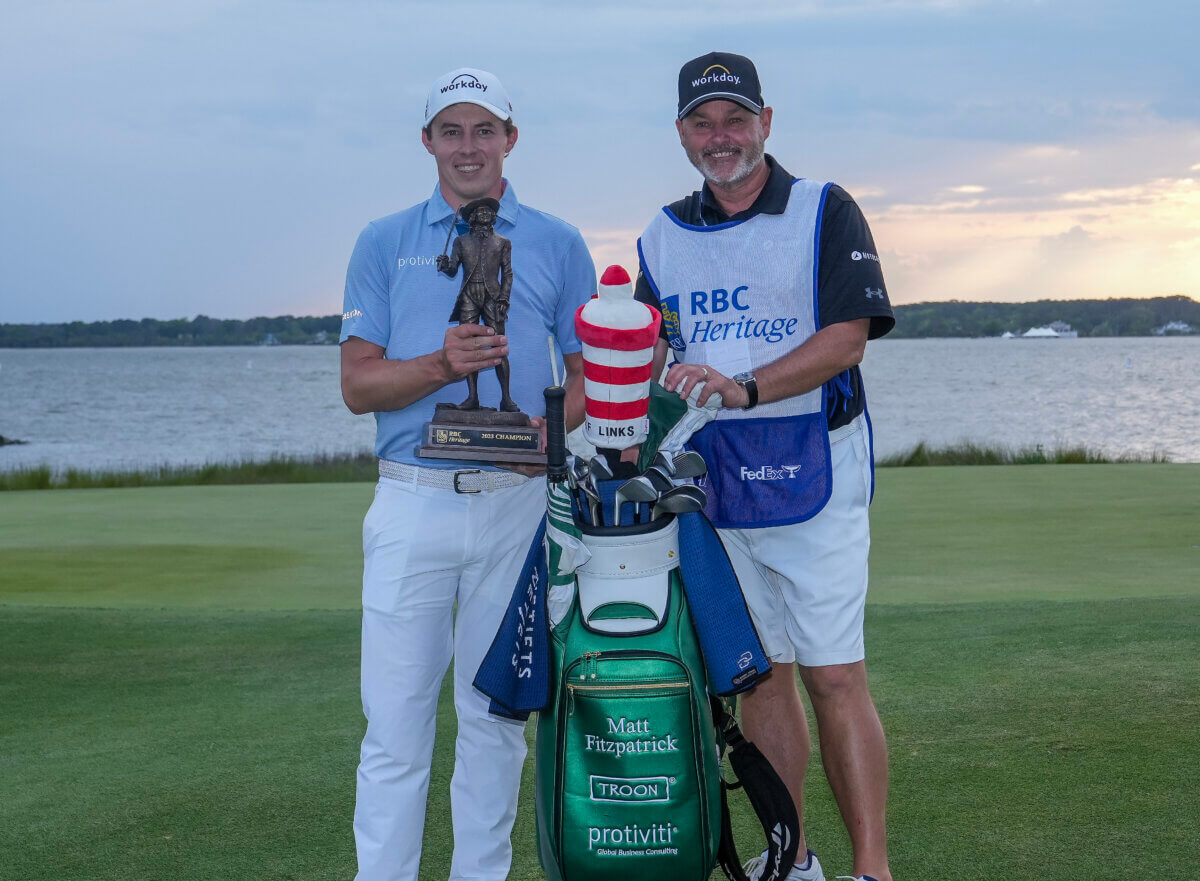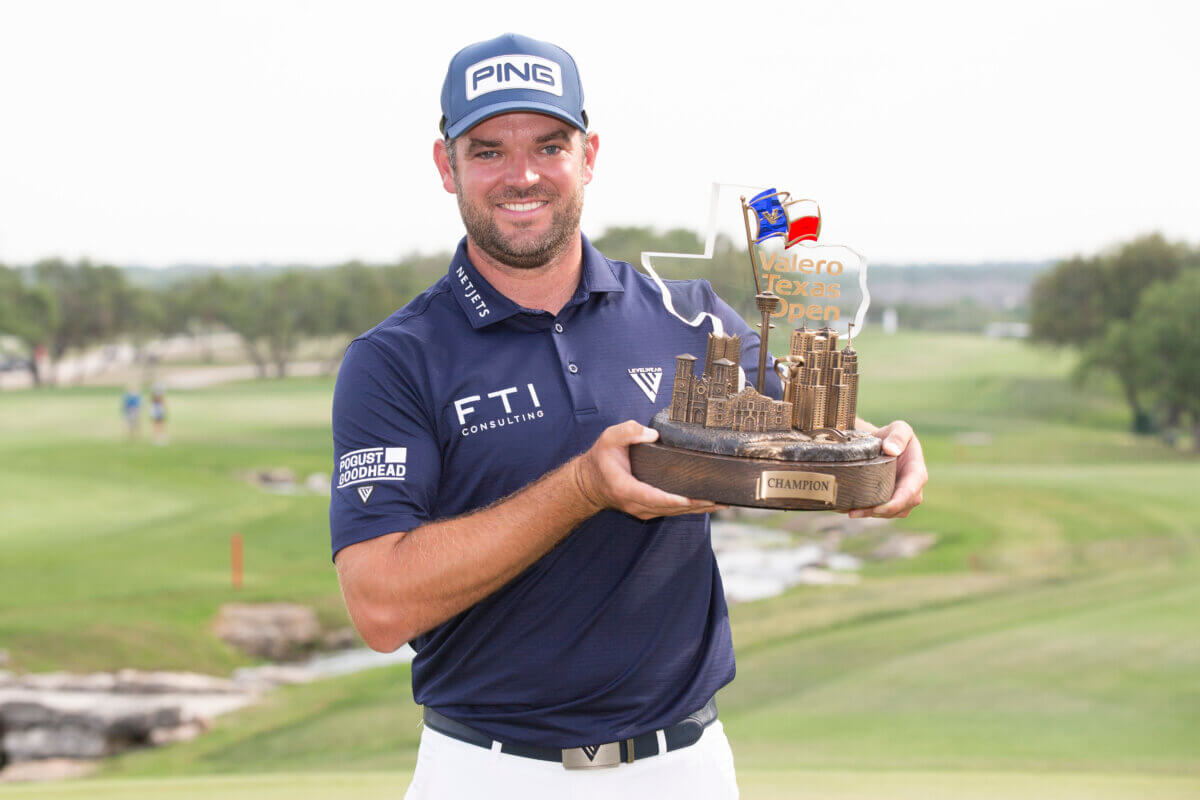Caddies reflect on last year’s Masters, look ahead to this week

It’s hard to believe that only five short months since crowning a Masters champion, the golf world is headed back to Augusta National for the Masters.
Caddies and players faced different conditions than what they’re accustomed to in November with a much slower course than normal. There were also no patrons on site to line fairways as they usually do.
Veteran looper Brennan Little explains what he expects with things somewhat back to normal this week.
“I think it’s great to come back this quickly. I’m very familiar with the golf course anyways, so it’s nice to have just been there and that familiarity is great,” Little said. “It’s going to play totally different though. It’s going to play more like it always does. In the fall, the overseed hadn’t really come in, they kept it much softer, greens were slower so it really wasn’t normal Augusta. I hear already that it’s playing firm and fast right now so it will probably be back to what we’re used to. We’re going to see the Augusta we know this time.”
RELATED: Masters preview podcast with caddies Damian Lopez, Jeff Willett and Brian Reed
So what shots did this affect the most for players and caddies in November?
“If you hit it left on 13, it wasn’t as fast as it always has been,” Little explained. “Behind the green on 14, 15 over the green — it was a much easier chip, so every hole has a couple spots that are super fast that you just don’t want to end up on the wrong side of the hole. In the fall, most of them, you could play. It would be a very tough shot but you could play it. Whereas the normal times when you’re there you’re trying to hit it to 15-20 feet and make a putt.”
Little explained that in certain spots like the back of 12, it was easier to use your putter from just off the surface than in years past as it wasn’t as fast. Little’s player — Gary Woodland — said during Masters week that he was expecting players to use putter from off the surfaces in many places on the course.
“The holes that had trees around the greens like 12 with the trees on the left, the (overseed rye) grass really hadn’t come in, so everyone was putting it,” Little said. “It’s a very tough chip, you’d see everyone putting it. Normally when that pin on five is up in the middle there or anywhere on the right side, you hit it right and it goes down that hill on the green and it’s almost an impossible putt to come up and then back down to the hole to get it close. In the fall, you could do it. It was slow enough once it got over the hill, it wasn’t running straight away from you.”
Another green that veteran loopers noticed didn’t quite have the same lightning speed was on the par-3 16th. Veteran J.J. Jakovac (Collin Morikawa) thought that was particularly a factor with a left pin there.
“The putt on 16 for the left pin, if you left your shot top right, there are years where you can’t putt that ball within seven feet of the hole because it’s so steep,” Jakovac said. “Last year, you could putt it down to two or three feet if you hit a really good putt.”
The chip from the back of the par-5 15th was also a different story in the fall according to Jakovac and Little.
“Not only could you hit it over the green and it would stop shorter from going all the way down the hill, but your pitch back toward the green to the downslope towards the water was also slower and checked a little bit,” Jakovac said. “You could miss it long there and get it up and down a lot more easily than other years.”
As Jakovac preps with Morikawa for Morikawa’s second trip to the Masters this week, he knows that putting will be crucial. And he expects to see the very fast greens he’s used to in past Masters.
“At Augusta, you almost never have a putt where you’re hitting it anywhere around the hole,” Jakovac said. “You’re feeding the ball toward the hole and you’re putting 12 footers that break 2 1/2 feet.
“Learning to putt those greens, it’s really different from anywhere else we play. You’re making a lot of putts where on a clock if six o’clock is going straight in the hole, you’re making a lot of putts that go in at four o’clock — those big right to lefters. Or putts that go in at eight o’clock — the big left to righters. They’re going in the side door. There aren’t many putts that are straight out there.”
The energy and vibe around the course was understandably different with no fans last year. Just ask 20-year veteran looper Jeff Willett, who caddied for his player Nick Taylor’s first Masters in November.
“On Masters Tuesday we were hitting our second shots on 15 and that’s when Rahm made that ace on 16,” Willett said. “If that was a regular Tuesday, that place would have erupted and you’d have heard it all around the golf course. There were only five people down there. We heard them screaming and thought, ‘he must have made that’.”
For Little, the visuals and the feel of the course with no patrons was something he understandably wasn’t used to.
“I think it was totally different not having grandstands in November, it’s really easy to see holes without people on them,” Little said. “You’re looking down at No. 2 and the right side where the people just line that whole right side, basically right to three tee, it’s just weird to see just open grass. Not to see the stands on the back nine. Fifteen, 16, it’s a different look.”
Speaking of 16, that’s the low point of the course and one of the most popular spots to get a glimpse of play.
“Sixteen on the weekend usually has that stadium and theater feel,” Jakovac said. “There’s just people everywhere, but that big side of the hill by the water was just empty. It’s a massive property and a beautiful course, but it looks even bigger when there’s no people because it’s just like sprawling land.”
We’ll see some patrons on the property this year, thankfully, and we’ll soon see and hear what kind of effect they will have, even if in limited numbers.
“It’s weird having another Masters so quickly but it feels right just because it’s April, it’s spring,” Jakovac said. “It feels great to be going back there because we’re going to hopefully get good spring weather and see the golf course play like they want it to play.”






